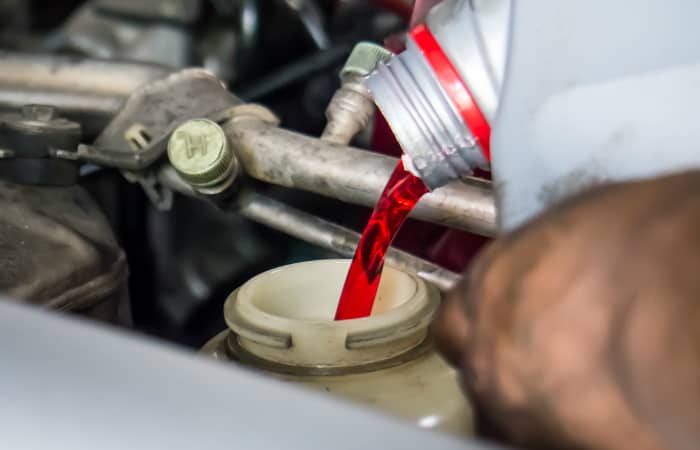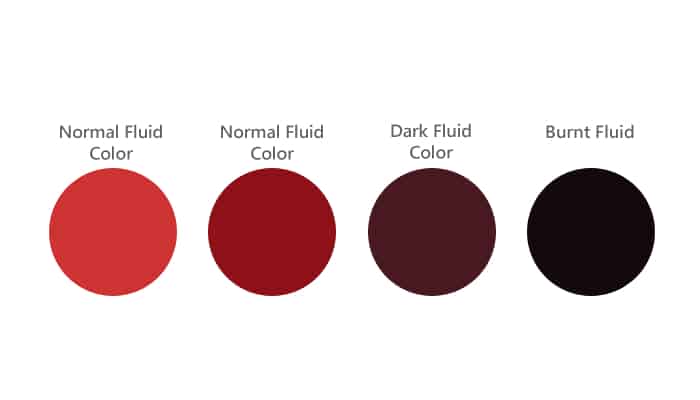Like the human body, automobiles need fluids so their parts will last for a long time. Without fluids, most metal components would create too much friction as they work together. Additionally, nothing would regulate the temperature around the vehicle which is a huge safety hazard. One essential type of fluid is found in the transmission system. Moving the car literally takes a lot of work in the transmission because it uses hundreds of components in just one system. Obviously, that will also take a toll on the fluid. To know more about the system, its special liquid and the maintenance needed, stay with us as we gradually reveal the answers to how often you should change the transmission fluid.
The Transmission System
To move your vehicle, you really need to activate the transmission to change the engine’s gear. By doing this, the engine provides power to your wheels. Since there are a lot of components inside the transmission system, let’s focus on the main parts of the automatic type:

Torque Converter
This component serves as a clutch to let the automobile stop in gear even while the engine continues to run.
Governor & Modulator/Throttle Cable
Emphasizing the essence of an automatic transmission, the governor and the modulator monitor your vehicle’s throttle position and speed to signal when to shift.
Planetary Gear Sets
These are the mechanical systems that give different forward and reverse gear ratios.
Seals & Gaskets
Leaks can totally damage a vehicle. Thanks to seals and gaskets, they ensure that the oil stays in its container. Eventually, though, you really have to replace the oil for maintenance purposes.
Hydraulic System
Now, this is where the transmission fluid works its wonders. The hydraulic system uses the fluid to control the bands, clutches, and planetary gear sets.
Computer
This component controls the shift points of newer automobiles. It also leads electrical solenoids in order to shift the flow of oil to the right component while following correct timing.
The Transmission Fluid
Now that we understand the role of transmission in a vehicle, let’s proceed to the types of transmission fluid as well as its functions:
Types
The most common types of transmission fluid, especially for automatic transmission, are Dexron and Mercon. They come in different levels of quality. They have friction modifiers to successfully protect the transmission’s internal surfaces. However, Highly Friction Modified or HFM fluids actually have more effective friction modifiers.
Meanwhile, synthetic fluids are more expensive than Dexron and Mercon because they are better at withstanding extreme changes in temperature. They can also significantly reduce shearing, oxidation, and friction.
The last common type of transmission fluid that is best for an automatic transmission is Type-F. However, it is more effective for vintage model automobiles. It does not have friction modifiers.
When it comes to manual transmission, hypoid gear oil and motor oil are the ideal options. Hypoid gear oil is highly resistant to extreme temperatures and pressures. Lastly, even though motor oil is commonly used for the engine, it can actually be an efficient lubricant for manual transmission. Motor oil is very similar to gear oil based on properties and composition.
Functions
Transmission fluid focuses on lubricating transmission components. However, it has bonus functions which is purely a good thing. It can increase the range of temperature and the speed of rotation. Additionally, it can reduce high temperatures to improve cooling. Lastly, it can maintain gaskets and clean metal surfaces to prolong their lifespan.
How Often to Change Transmission Fluid
Knowing the exact answer to how often you should replace transmission fluid is almost impossible. The frequency of this type of maintenance still depends on your vehicle’s manufacturer.
Many automatic transmissions follow the 100,000- to the 150,000-mile interval when it comes to replacement of fluid. However, a lot of experts claim that it should be more frequent. To be more specific, 50,000 miles is their recommended interval.

We haven’t got to manual transmissions yet. Experts suggest changing manual transmission fluid even more frequently than 50,000 miles. Some specific claims recommend 30,000 miles. One reason involves the requirement of manual transmissions to use traditional gear oil.
You really have to take note of the mileage intervals we mentioned since replacement of transmission fluid is no joke. This type of automotive fluid really deteriorates. Factors that speed up its aging process are towing, carrying heavy loads, and stepping on the brakes too often due to a traffic jam. These conditions raise the temperature of the transmission. The point is, intense heat strains the fluid.
Symptoms of Deteriorating Transmission Fluid
Just because you reach a certain mileage does not mean you have to replace the transmission fluid immediately. Do meticulous inspection first. If you notice one of the following symptoms during an inspection, then you may consider replacing your transmission fluid:
Color
Transmission fluids available in the market have various color options. Some choices include blue, yellow and green. However, the most common color is pinkish red. Not only that, it should be bright and translucent.

Because of the typical brightness of transmission fluids, it is so easy to identify if it is already deteriorating. If the fluid is brown, you have to replace it pronto. In fact, it may still get worse. Transmission fluid can turn black. The main reason for the darker color is contamination. After a long time of supporting the transmission, the fluid gradually catches a lot of debris and particles.
Odor
Healthy transmission fluids have a mild sweet scent. This fact actually makes it easier for you to smell the need for replacement. Deteriorating transmission fluids smell like something is burning.
Summary
Even if some people would tell you that replacing transmission fluid is not as important as other maintenance processes, always inspect the system based on your owner’s manual and the mileage intervals we stated earlier. Changing your transmission fluid may be as frequent as 30,000 miles or as seldom as 150,000 miles. There is no definite answer for all vehicle models.
To learn more about the frequency of maintenance for other vehicle components, learn how often you should get a tune-up and a wheel alignment. Additionally, find out how to do brake maintenance.









